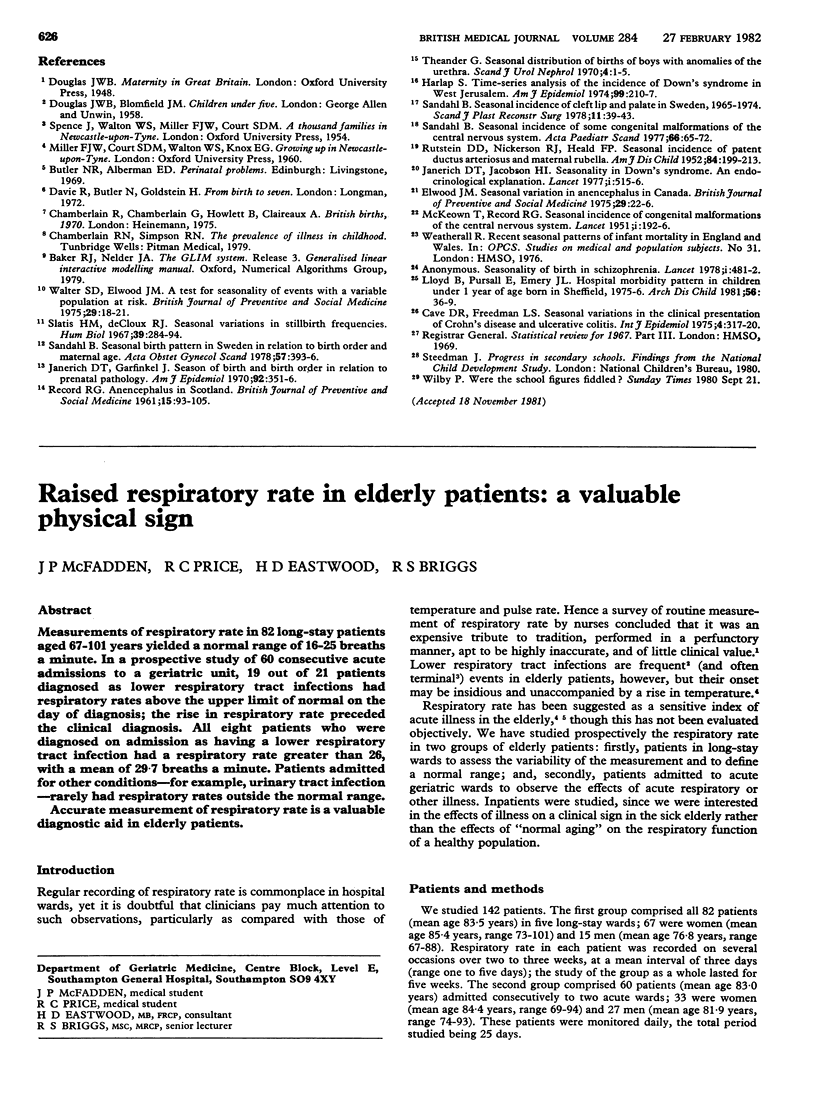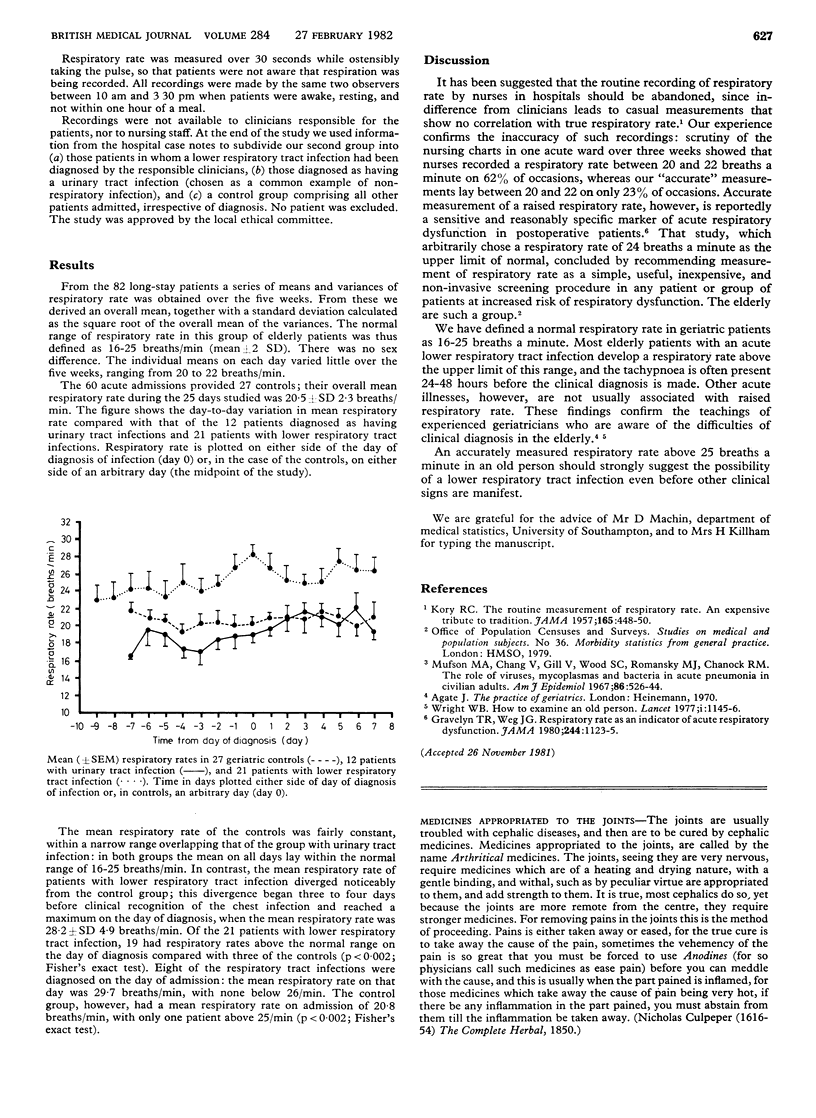Abstract
Measurements of respiratory rate in 82 long-stay patients aged 67-101 years yielded a normal range of 16-25 breaths a minute. In a prospective study of 60 consecutive acute admissions to a geriatric unit, 19 out of 21 patients diagnosed as lower respiratory tract infections had respiratory rates above the upper limit of normal on the day of diagnosis; the rise in respiratory rate preceded the clinical diagnosis. All eight patients who were diagnosed on admission as having a lower respiratory tract infection had a respiratory rate greater than 26, with a mean of 29.7 breaths a minute. Patients admitted for other conditions-for example, urinary tract infection-rarely had respiratory rates outside the normal range. Accurate measurement of respiratory rate is a valuable diagnostic aid in elderly patients.
Full text
PDF

Selected References
These references are in PubMed. This may not be the complete list of references from this article.
- Gravelyn T. R., Weg J. G. Respiratory rate as an indicator of acute respiratory dysfunction. JAMA. 1980 Sep 5;244(10):1123–1125. [PubMed] [Google Scholar]
- KORY R. C. Routine measurement of respiratory rate; an expensive tribute to tradition. J Am Med Assoc. 1957 Oct 5;165(5):448–450. doi: 10.1001/jama.1957.02980230018005. [DOI] [PubMed] [Google Scholar]
- Mufson M. A., Chang V., Gill V., Wood S. C., Romansky M. J., Chanock R. M. The role of viruses, mycoplasmas and bacteria in acute pneumonia in civilian adults. Am J Epidemiol. 1967 Nov;86(3):526–544. doi: 10.1093/oxfordjournals.aje.a120763. [DOI] [PubMed] [Google Scholar]
- Wright W. B. How to examine an old person. Lancet. 1977 May 28;1(8022):1145–1146. doi: 10.1016/s0140-6736(77)92399-6. [DOI] [PubMed] [Google Scholar]


